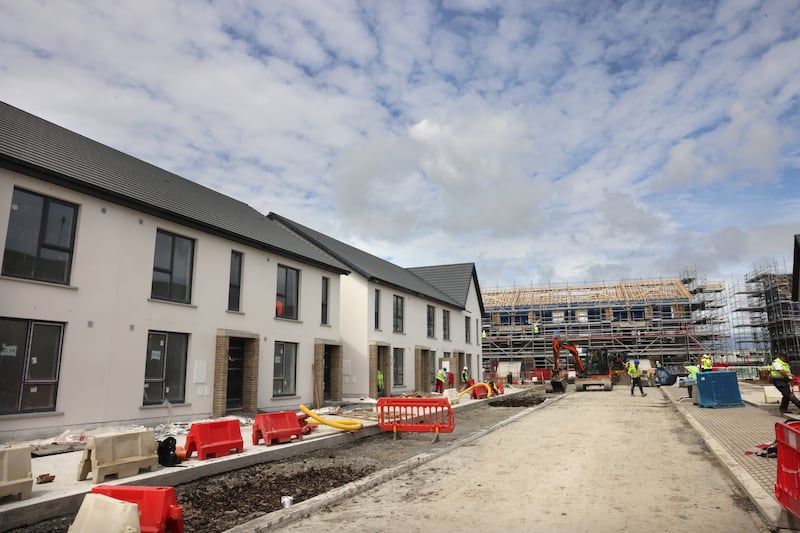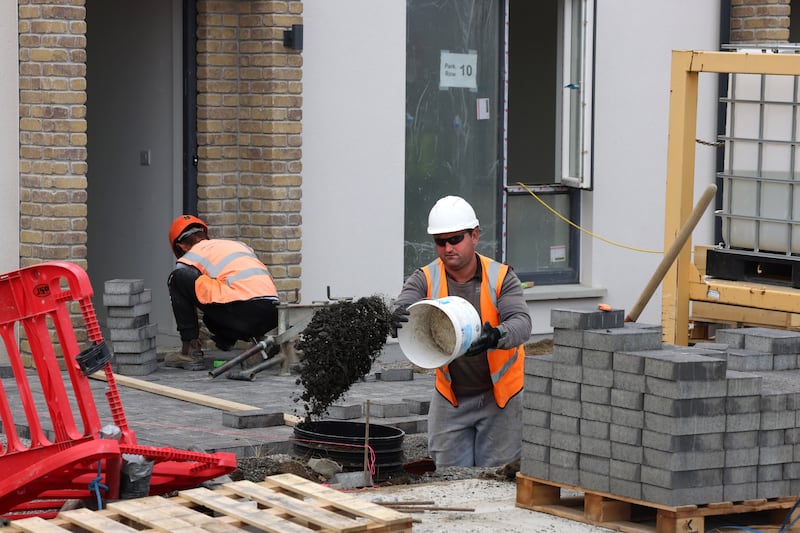Heading west from the city along the Grand Canal it is striking how few homes there are facing, or even particularly close to, what is one of Dublin’s best amenities.
From Inchicore to Clondalkin, industrial sites dominate. Eventually these give way to fields – or what were fields until six months ago, now fast becoming the largest residential building project in the State.
In just four months’ time the owners of the first 100 homes in Clonburris, the State’s newest town, will get their keys. By the end of the decade some 9,000 houses and apartments are expected to be completed for a population of more than 23,000, similar in size to Newbridge.
Clonburris is vast ‑ a 280-hectare plot stretching along the canal for 3.5km, bisected by the Dublin-Kildare railway line. There are two train stations within the site, one already operational at Clondalkin at its east end, and in the centre of the site, Kishoge, built 14 years ago and eventually to open by the end of this year. The next station along the line is at Adamstown.
Adamstown just to the northwest of Clonburris was the first new town of the 21st century. In 2001 the Government approved the construction of 10,000 homes at the Adamstown Strategic Development Zone (SDZ). This involved the creation of a plan for the entire zone, not just the housing, but all the elements needed for a town – schools, shops, parks, leisure facilities, health centres, roads and public transport. Once the overall plan was approved by An Bord Pleanála applications for development would be granted by the local authority, in this case South Dublin County Council.
The planning board approved the Adamstown SDZ in 2003, and by 2006 the first homes were completed. That same year the council produced plans for its next town, Clonburris, a high-density “eco-district” of up to 15,000 homes, making use of the rail capacity that would come from Metro West, and its arguably better location than Adamstown, with lands to the north and south of the existing rail line, its canal-side setting and proximity to the city.
The planning board approved the Clonburris SDZ in 2008. At the same time Adamstown was progressing nicely with more than 1,000 homes built. Then came the economic bust and everything stopped. Construction of Adamstown dried up, Metro West was shelved, and with no development likely at Clonburris for the foreseeable future, the SDZ was revoked.
Emerging from the dust of the collapse in 2015, the Government decided the council should have another crack at Clonburris, but at a more modest level. In 2017 it published a new SDZ, approved by the board in mid-2019, with the council ready to begin infrastructure work and start receiving residential applications just in time for the Covid pandemic.
Last year Cairn Homes, the largest landowner in Clonburris, with ambitions to build 5,500 homes within seven years, secured its first planning permission for 569 homes. The first 100 houses and duplexes at Seven Mills will go on sale in September, to be ready for occupation in November. While the final sales price has yet to be set, Cairn Homes chief executive Michael Stanley says, they will be in the “range of €350,000 to €450,000″ depending on size and type. Back when the SDZ was published in 2017, Stanley had spoken of selling houses below the €300,000 mark.

“Unfortunately a standard 3 bed-semi we would have built in 2017 today is costing roughly €175,000 more to build. Time is money. We probably could have been building pre-Covid, pre-Brexit, pre-Ukraine and all those things have had a big impact on cost, but that’s just the reality.”
Of the first 100 homes, 25 will be available under the affordable purchase scheme, and with State subsidies will sell below the €300,000 mark he says.
Stanley plans to complete some 500 homes next year, ramping up to 1,000 a year up to 2030. “This SDZ was created in 2006 we’re now in 2023. It’s taken 17 years, many different landowners, all sorts of frustrations. We want to do it in six or seven years because it’s taken almost 20 years to get to the start of it.”
Stanley believes the council is equally ambitious to see the new town built. “I genuinely have a lot of faith in South Dublin County Council. They have lived through these challenges in Adamstown.
“We would have loved to have been here three or four years ago, but we’re here now and we’re making up for lost time.”
Adamstown was certainly instructive when it came to Clonburris, says Mick Mulhern director of planning for South Dublin County Council. “The lesson we’ve all learned from Adamstown is you have to invest in infrastructure – streets, parks, schools, transport ‑ first. It was expected all of this would funded by the private sector and that’s why it’s taken Adamstown 18 years to get to 4,000 homes.”

About €270 million is being spent on infrastructure in Clonburris, €205 million of which will be State-funded with the rest from developers. Adamstown has also recently secured State funding and Mulhern says is likely to reach its scaled-back target of about 8,000 homes within the next four years.
The council is the second-largest landowner in Clonburris, with around 30 per cent of the site, and has plans for more than 2,600 homes, around 40 per cent of which will be social housing with the rest a mix of affordable purchase and cost rental. Work on the first 116 will start in September for completion and occupation in early 2025, Mulhern says.
[ Ireland’s housing crisis facts and figures: All you need to knowOpens in new window ]
“In 2019 when the planning scheme was adopted we didn’t have a funded infrastructure programme, not all the land was in the ownership of housebuilders, and we had to acquire lands to facilitate the delivery of some of the street network, so it would have been a challenge to do it much faster,” he says. “You can get disheartened on how long the process takes, but once it gets going it gets going apace.”



















